Welcome back to our blog series on tea names! Today, we’ll cover gyokuro and kukicha.
Gyokuro 玉露
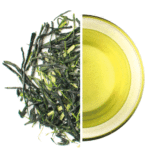
Heavenly Drop Gyokuro
Gyokuro, meaning « jewel dew, » conjures up an image of morning dewdrops collected from rare jade, and the tea liquor is a vibrant green color to match. Gyokuro is famous as a luxury tea; it’s harvested just once a year, and is processed with great care. Less than 1% of Japanese tea is produced as gyokuro! Like matcha and kabuse sencha (see part 1), the bushes are shaded for three weeks, although the shading method is slightly different. The shades are erected above the bushes, rather than laying directly on the plants, so the tea has more room to grow upward. As a result of its special growing and processing methods, gyokuro is especially sweet, buttery, and full of umami. A little more modern than sencha, gyokuro was developed in the 1830s.
Kukicha 茎茶
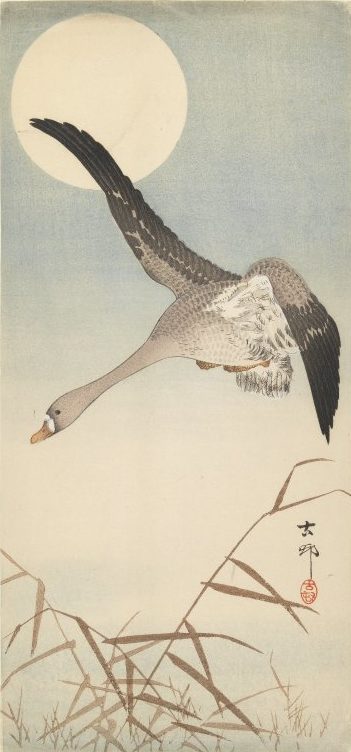
Goose Flying in Moonlight by Ohara Koson
Kuki means « twig, » or « stem, » and that’s exactly what sets kukicha apart from other teas; it’s made primarily of tea stems or leaf veins, which are a by-product of other teas. These parts of the tea plant taste different from the leaves (generally more sweet and mild), and they contain less caffeine. There are kukichas of many different qualities; some are high-grade, made from gyokuro, others are made from bancha, and are daily-drinking teas. Some kukichas are roasted, some are not. Regardless, kukicha is a thrifty and delicious way to make use of the entire harvest.
If you’ve ever taken a look at Obubu’s kukicha, you may have noticed that they are all named after birds, and each package has a silhouette of its namesake on the label. We didn’t come up with this bird-association all by ourselves!
Karigane 雁が音
Karigane, or « cry of the wild goose » is an old Kyoto name for kukicha, referring specifically to tea made from the twigs and stems left over from making gyokuro or high-grade shaded sencha. Wild geese, while migrating, will sometimes land on driftwood floating the the water, to take a rest. Some say that the stems of karigane tea look like little rafts of driftwood while they’re brewing, and that is the origin of the tea’s name.
Obubu’s Kukicha!
We named these teas ourselves, so you won’t find teas by these names unless they’re sourced from us! All of our kukichas are made from the stems of tencha (see part 1).
Mejiro 目白
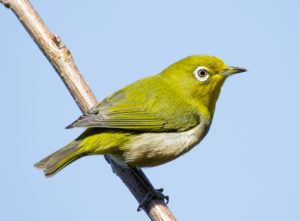
Japanese white-eye
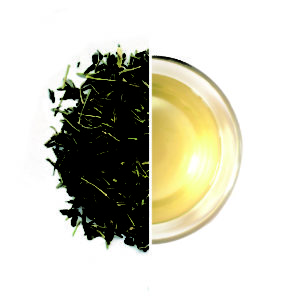
Mejiro Kukicha
Mejiro means « white eye, » which is also the name of these birds in English. Their backs are a yellow-green, similar to the color of our mejiro tea! Mejiro is our most premium kukicha, made from stems set aside while making our highest-grade ceremonial matcha, uji hikari, in the spring. It’s sweet and fresh, with plenty of umami.
Meguro 目黒
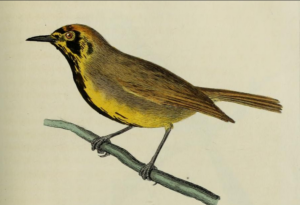
Bonin white-eye
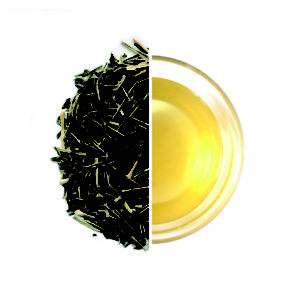
Meguro Kukicha
Meguro, or « black eye, » is the Japanese name for the Bonin white-eye, which is similar to mejiro, but with a dark patch around the eyes. Our meguro kukicha is made from stems from our gokou matcha, our second-most premium ceremonial matcha. As a result, it’s a little more astringent and tastes a bit like green peppers.
Tsubame 燕
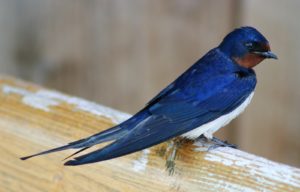
Swallow
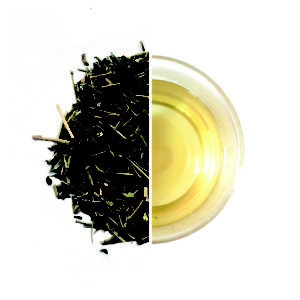
Tsubame Kukicha
Tsubame is the Japanese word for swallow, known for their deep blue backs and long, forked tail feathers. This tea is made from the stems of tencha harvested in the summer, and has a darker, more honeyed taste than mejiro or meguro.
Suzume 雀
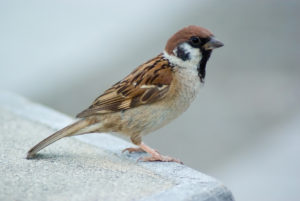
Tree sparrow
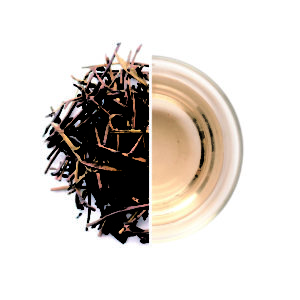
Suzume Kukicha
Suzume are tree sparrows, small chestnut-brown birds with black and white patches. Suzume kukicha is made from autumn tencha, which is then roasted. The resulting liquor is a delicate pink-brown, like the tree sparrow’s feathers, and it has a sweet, smoky flavor.
Tsugumi 鶫
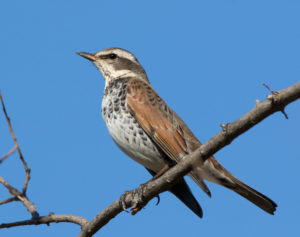
Dusky thrush
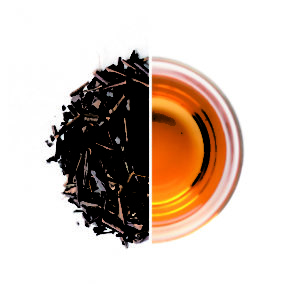
Tsugumi Kukicha
Lastly, tsugumi refers to a bird called the dusky thrush, which have flecked white breasts and dark, reddish-brown backs. Like suzume, the tsugumi kukicha is roasted, and made from an autumn tencha. A bit darker in flavor and color than the suzume, tsugumi is nutty and woody.
And that’s it for this week! Next time, we’ll discuss bancha and houjicha. Happy tea drinking!
Sources

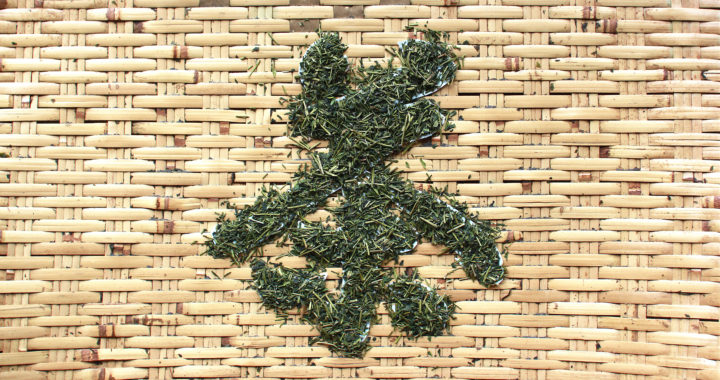
Pingback: What’s in a Name? Part II: Gyokuro & Kukicha – Allegra in Japan
Pingback: What's in a Name? Part II: Gyokuro & Kukicha | Time to Play